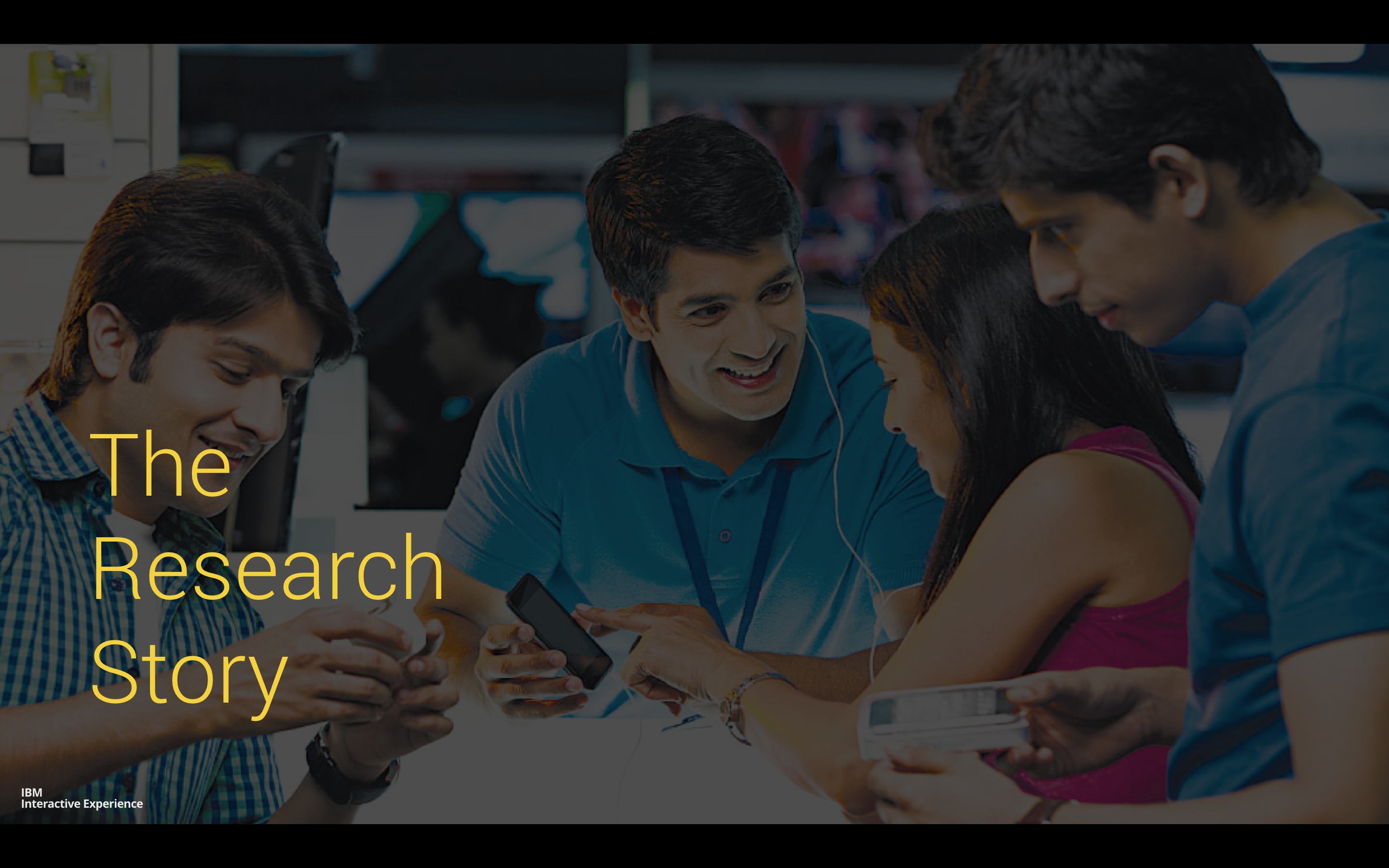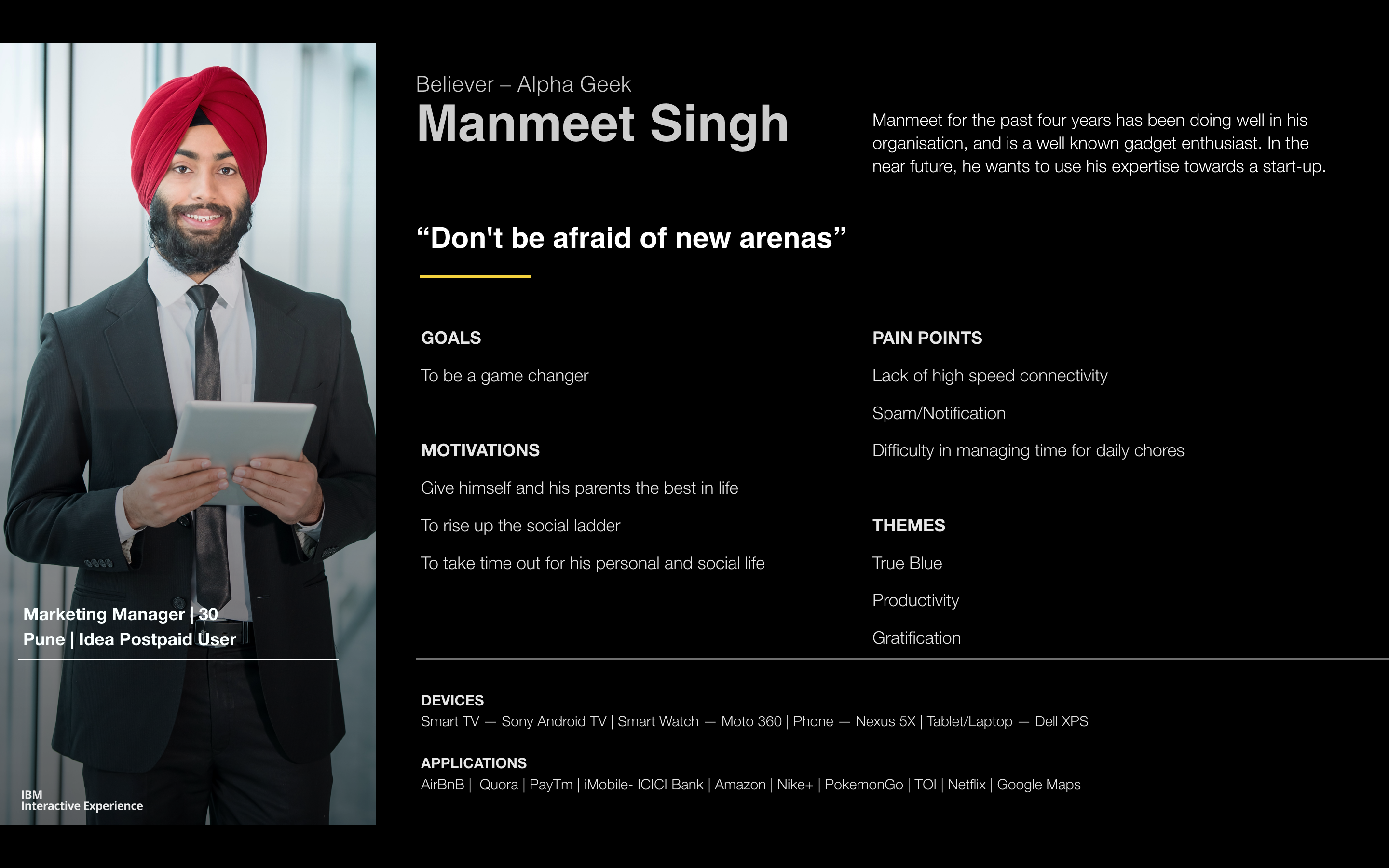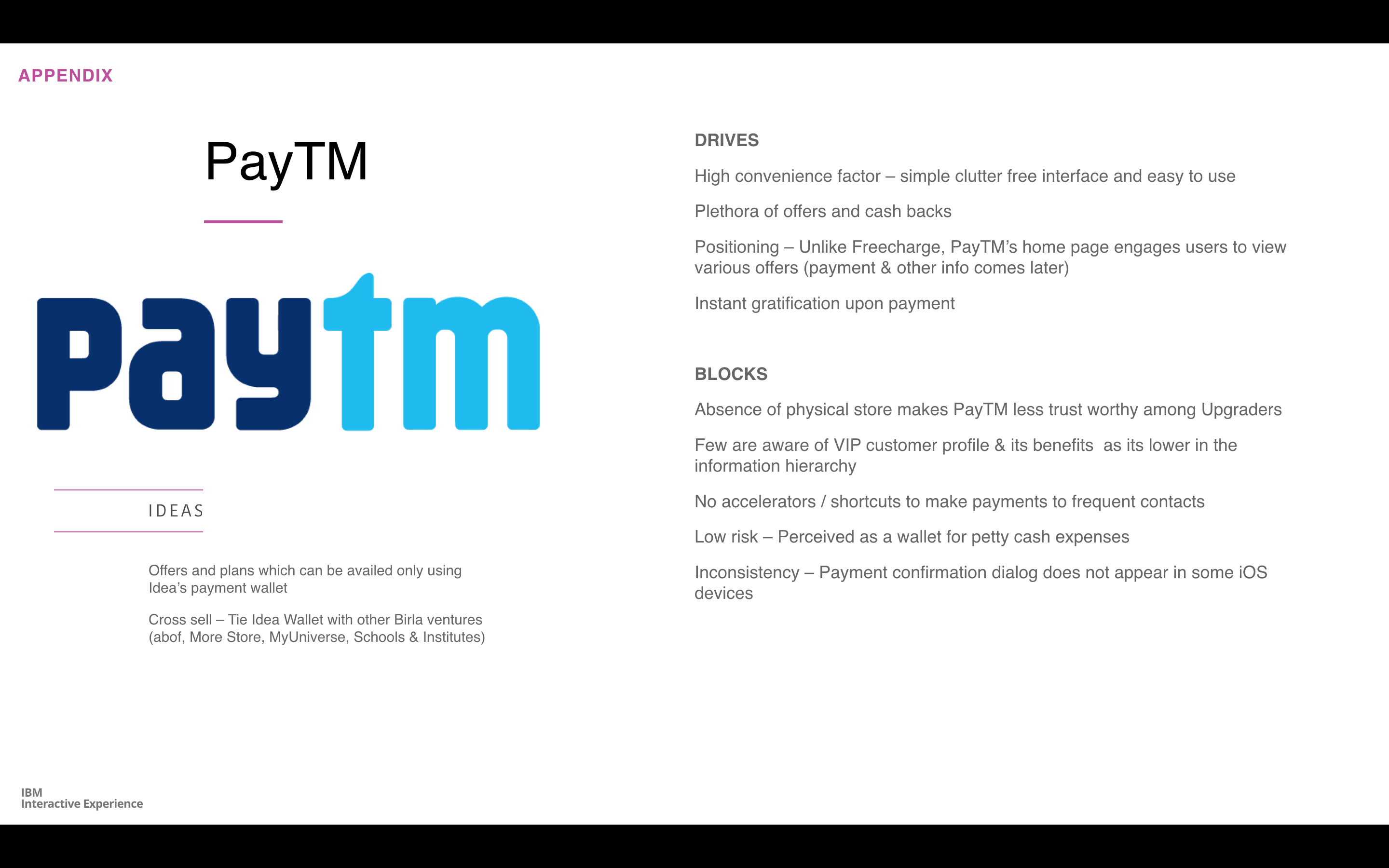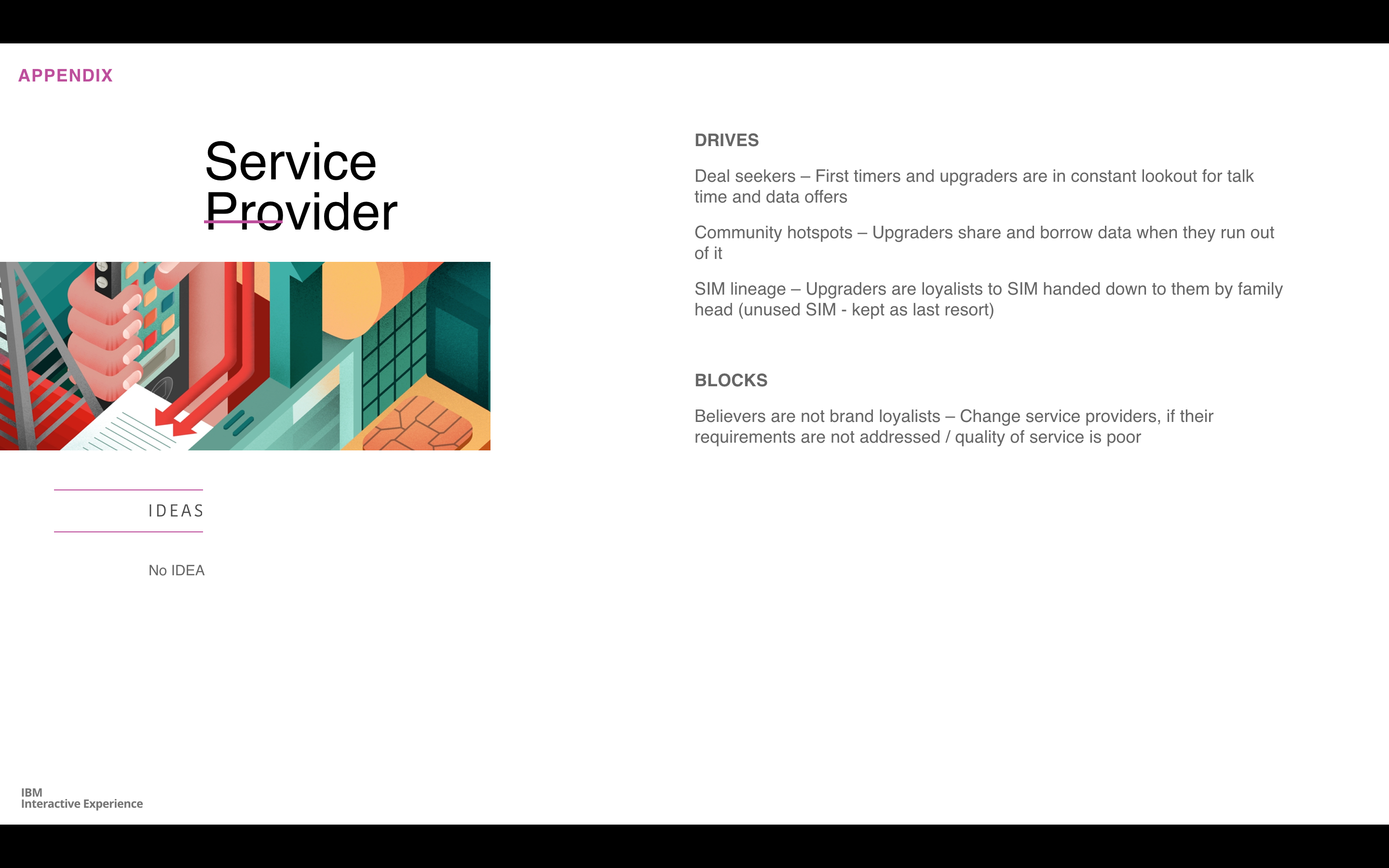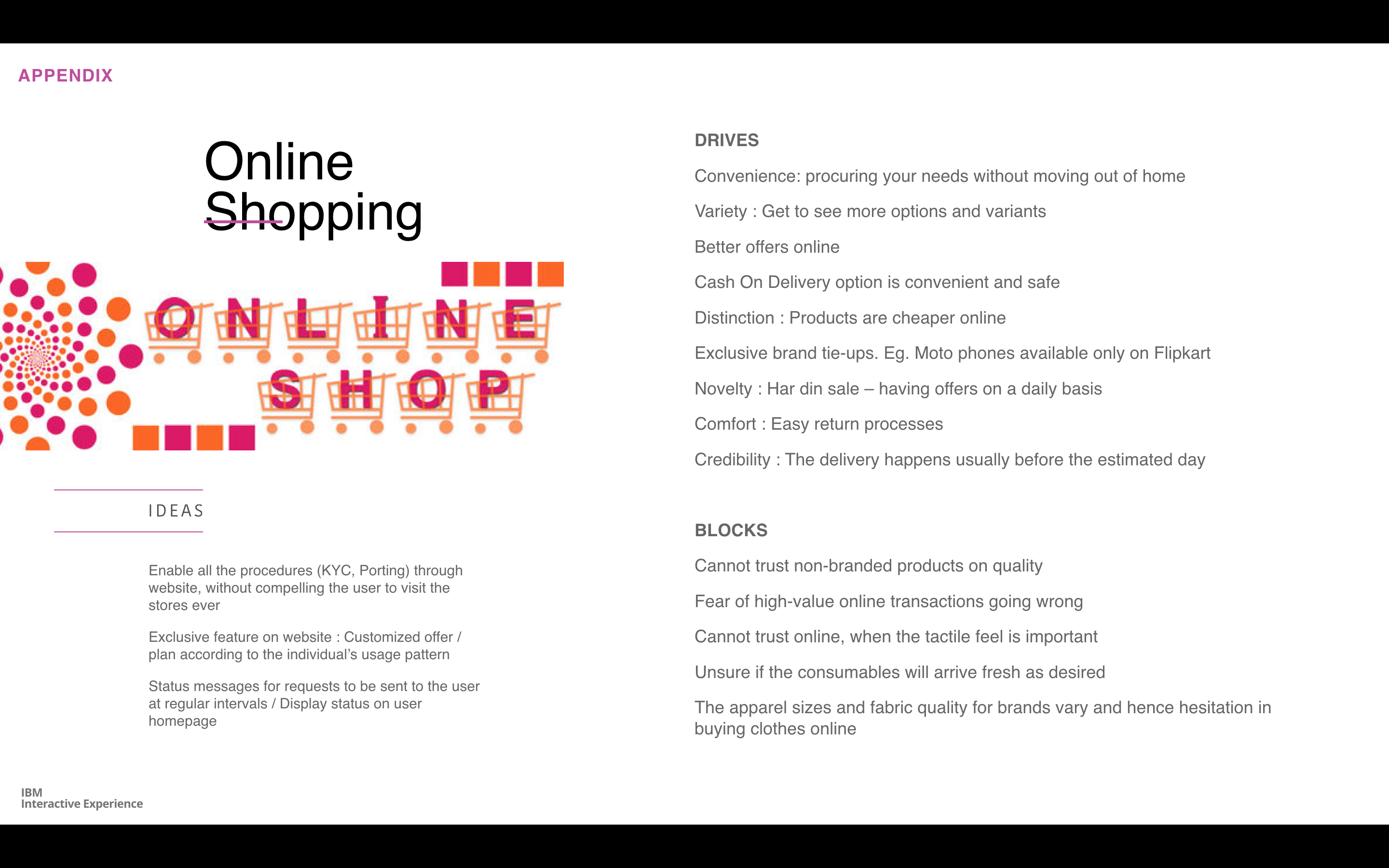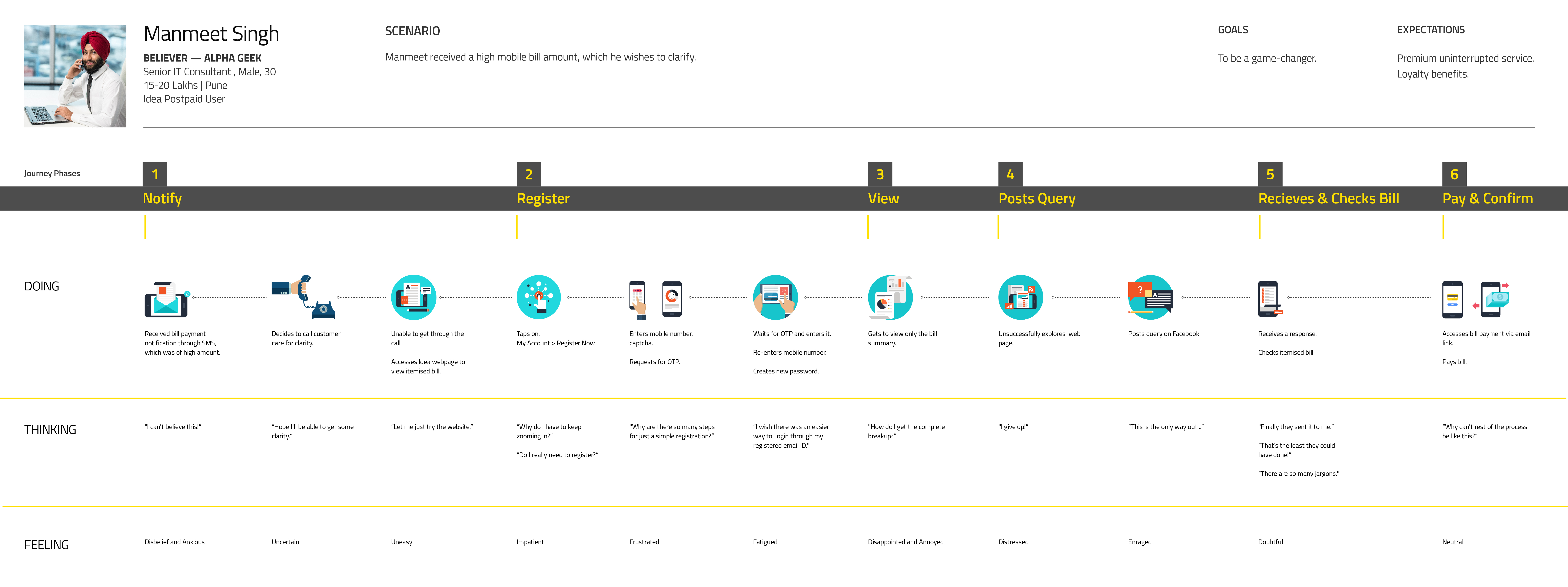Gathering insights into
User Behaviour for India's
largest Telecom Services
Brand - Idea Cellular
Idea Cellular is a leading telecom service provider in India. Idea asked IBM IX to conduct a country-wide study for gathering needs of users/customers to understand drives and blocks for adoption of digital payments. An open ended research questionnaire was devised with topics like values surrounding internet, online shopping, social network, etc. I led the team of about 10-12 design researchers and took them through the research process. The research was broad and was conducted in small as well as big cities in India. The team brainstormed and exchanged ideas for about a week and churned ideas together. We came up with city specific insights and then went on to gathering and writing high level insights which would be take-aways for Idea Cellular. The team also created personas based on user data received from the research. We followed the IBM Design Thinking process throughout.
Some high level insights I came up with are as below:
Some high level insights I came up with are as below:
High Level Insights:
1. Urban
Believers often came across as having “distinctive” and “individualistic”
choices in how they use mobile technology. The urban believer is a highly
“informed” individual who evaluates an app or website first, then chooses to
use it and based on the overall experience it provides, either remains loyal to
it or rejects it if it does not deliver. Brand loyalty does not play a major
role in these cases, as opposed to semi-urban users who tend to follow an
online brand more closely and consistently. For Idea, this means that in order
to retain users, they must offer value (in broad terms, defined as a great
customer experience) in their website/apps.
2. The
need for simplicity:Urban believers are beginning to seek minimalism and simplicity in using
apps/websites/products. The need to save and successfully manage
space
sometimes overtakes the need to be informed and have more. A wide plethora of
smartphone apps, ranging from entertainment to utility to shopping, are being
downloaded, evaluated and retained on the basis of how easy they are to use and
precisely, what they offer in terms of products and services and how light they
are on data usage and phone memory.
3. The
tendency of
“wanting more than I asked for”:
A) Good offers and discounts offered by leading online Ecommerce giants continue to be a major driver for people who choose to shop online, shopping apps like Amazon and Flipkart being most used from the wide plethora of apps.
B) Incentives like cash backs offered are often sought and availed immediately.
C) PayTM offers a wide range of services other than just being a mobile wallet. It is a one-stop-shop for utility payments, shopping, travel booking, movie booking et al. The psychology it works on is “I am getting much more than what I asked for”.
A) Good offers and discounts offered by leading online Ecommerce giants continue to be a major driver for people who choose to shop online, shopping apps like Amazon and Flipkart being most used from the wide plethora of apps.
B) Incentives like cash backs offered are often sought and availed immediately.
C) PayTM offers a wide range of services other than just being a mobile wallet. It is a one-stop-shop for utility payments, shopping, travel booking, movie booking et al. The psychology it works on is “I am getting much more than what I asked for”.
4. The success of mobile based wallets like PayTM also lies in the trust that this app has gained in a short period of time. Its success can be attributed to a clutter-free, simple-to-use interface, efficient task completion and a reassuring feedback that the user gets on using the wallet.
5. The need to belong:Among younger users, there seems to be a somewhat compulsiveness (compelling urge) in their behavior related to using apps. As a generation, they look for social approval and a sense of belonging with their peers. Their inner circle is a biggest influencer and drives their decision making.
